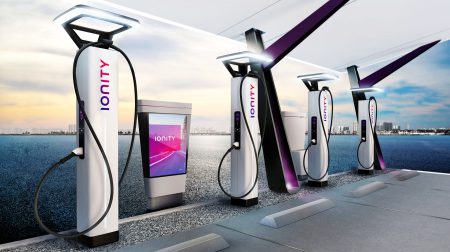Honda is a brand that’s always been at the cutting edge of technology. From being an early pioneer of hybrid to then being one of the first marques to explore hydrogen cars, it’s never been frightened to try and do things a bit differently.
Though in recent years its models might have taken a plainer approach, the brand is now back with a bang, as models like the Honda e show. While it could have played things safely with its first electric car to compete with more ordinary rivals like the Renault Zoe, Honda has instead been bold and different – packing its city EV with all the latest technology.
Here are five tech highlights of the Honda e.
It doesn’t have door mirrors
A key part of the Honda e is its minimalist exterior design – you’ll notice it looks similar at both the front and rear – and an element of that are its lack of door mirrors.
That’s right, there are no mirrors as such, but instead cameras that relay live images onto screens in the interior. It’s a really high-end touch and one that hasn’t been seen on a model of this size before. The rear-view mirror can also be changed into a digital screen to improve visibility too.

Interior is made up of five touchscreens
One look at the Honda e’s interior and you’ll quickly realise just how bold and different this EV is. That’s because there are an impressive five screens laid out across the full width of the dashboard.
These include two screens for the door ‘mirrors’, along with the main touchscreen and digital dials, while even the passenger gets their own screen. Both of these can be operated simultaneously, giving the Honda e a true connected experience.
Brimmed with safety equipment
Typically small cars make sacrifices when it comes to standard safety equipment, yet – despite measuring less than four metres long – Honda has managed to pack a range of driver assistance technology into the e.
Just a few features available include adaptive cruise control that can bring the car to a complete stop in heavy traffic, along with an intelligent speed limiter that can adapt your speed as the limit changes, along with blind spot information and a system that helps you avoid leaving the road.
Read more: Car Keys
It’s Time to Go Green!
If you would like to know more about Solar Panels and the PowerBanx range of home battery systems, and get a free instant quote, please complete our online form:












